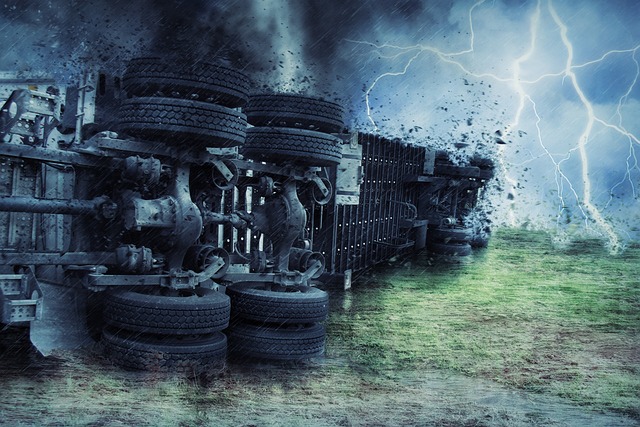Navigating Auto Accident Claim Process: Evidence to Lawsuit

After a car crash, prioritize safety and medical attention. Document the scene, collect evidence lik…….
In today’s fast-paced world, auto accidents remain a prevalent concern, impacting individuals, communities, and economies worldwide. An auto accident claim is a critical process that empowers victims to seek justice and compensation for the losses incurred in such incidents. This article delves into the intricate details of auto accident claims, exploring their global reach, economic implications, technological advancements, regulatory frameworks, challenges, and future prospects. By understanding this dynamic field, individuals can navigate the complexities of personal injury law, ensuring they receive fair restitution while contributing to a safer automotive environment.
An auto accident claim, also known as a motor vehicle liability claim, is a legal process initiated by an individual (the claimant) who has suffered harm or property damage due to a road traffic accident involving a motor vehicle. The primary goal of this claim is to seek compensation for various losses, including medical expenses, lost wages, pain and suffering, and vehicle repairs or replacement.
The key components of an auto accident claim include:
Accident Details: A comprehensive account of the incident, capturing the date, time, location, weather conditions, and a description of how the accident occurred.
Injury Assessment: Medical records and expert opinions play a crucial role in evaluating the extent of injuries sustained by the claimant. This includes both physical and psychological impairments.
Property Damage: Documentation of any damage to vehicles or personal property is essential for calculating financial losses.
Liability Determination: Establishing fault is a critical step, where investigators analyze evidence to determine who was at fault, such as speed, road conditions, driver behavior, or mechanical failures.
Claim Submission: The claimant submits a formal claim to the appropriate insurance company or government agency, providing all relevant information and evidence.
Auto accident claims have evolved over the years, driven by advancements in technology, changes in legislation, and growing public awareness of road safety. Historically, these claims were often complex due to limited documentation and less stringent regulations. With the advent of modern vehicle safety features, advanced medical treatments, and improved legal frameworks, the process has become more standardized and claimant-friendly.
The significance of auto accident claims lies in their ability to:
Auto accident claims are a global phenomenon, with varying degrees of sophistication and accessibility depending on the region. Here’s an overview:
| Region | Claim Process Complexity | Average Claim Value (USD) | Key Trends |
|---|---|---|---|
| North America | Highly sophisticated with strict liability laws | High, averaging $50,000 to $100,000+ | Increasing use of technology for claim submission and fraud detection |
| Western Europe | Well-established systems, known for efficiency | Moderate to high, depending on the country | Emphasis on no-fault insurance models and alternative dispute resolution |
| Asia Pacific | Varying levels of development; some countries have emerging markets | Varies widely, with urban areas showing higher average claims | Rapidly growing motorization rates leading to increased claims volume |
| Middle East & Africa | Diverse systems, some with traditional processes | Lower average claims due to lower vehicle ownership and income levels | Growing awareness of road safety standards and increasing investment in infrastructure |
The global auto insurance market, a key driver of claim settlements, was valued at approximately $1.3 trillion in 2020, projected to grow at a CAGR of 5-6% through 2027. This growth is attributed to factors like rising vehicle ownership, especially in developing economies, and increasing demand for comprehensive insurance coverage.
The auto accident claim process has significant economic implications, influencing various sectors:
Insurance Industry: Insurance companies assess risks, set premiums, and manage claims, requiring substantial capital reserves. The severity and frequency of accidents impact their financial health and investment strategies.
Healthcare Sector: Medical expenses are a significant component of auto accident claims, driving healthcare costs higher. Advanced medical treatments and extended rehabilitation can substantially increase claim values.
Automotive Manufacturing: Manufacturers invest in safety features to reduce the financial burden of accidents and enhance product liability. Innovations like advanced driver-assistance systems (ADAS) have become standard across many models.
Government and Infrastructure: Public funds are allocated for road maintenance, traffic management, and emergency services related to auto accidents.
Auto accident claims serve as a critical mechanism for risk transfer and loss mitigation:
Risk Management: Individuals and businesses purchase insurance policies to protect themselves from financial losses due to auto accidents. Insurers assess risks, provide coverage, and manage claims, ensuring stability in the market.
Economic Stabilization: Efficient claim processing helps maintain economic balance by providing a structured framework for resolving disputes and compensating victims promptly.
Investment Opportunities: The insurance sector offers investment opportunities in stocks, bonds, and specialized funds, contributing to financial markets’ overall health.
Technological innovations have revolutionized the auto accident claim process:
Digital Claim Submission: Online platforms enable claimants to submit claims swiftly, providing real-time updates and reducing paperwork.
Telemedicine and Remote Assessment: Video conferencing allows medical professionals to assess injuries remotely, especially in remote areas or emergency situations.
Advanced Data Analytics: Insurance companies employ AI and machine learning algorithms for fraud detection, risk assessment, and predictive analytics, improving claim accuracy and efficiency.
Internet of Things (IoT) Devices: Connected vehicles can provide real-time data on accident conditions, driver behavior, and vehicle maintenance, enhancing liability determination.
The future holds immense potential for technology to further enhance auto accident claims:
Blockchain for Record-Keeping: Secure and transparent record-keeping using blockchain technology can streamline claim processing, reduce fraud, and ensure data integrity.
Autonomous Vehicles and Claims: As autonomous vehicles become more prevalent, new challenges and opportunities will arise, requiring innovative approaches to liability determination and claim settlement.
Augmented Reality (AR) for Accident Reconstructions: AR could provide immersive accident scene re-creations, aiding investigators in understanding complex accidents and presenting evidence in court.
The regulatory landscape surrounding auto accident claims varies globally but shares common goals:
Liability Laws: These laws dictate who is responsible for compensating victims after an accident. Strict liability laws hold all drivers accountable, while other jurisdictions follow a fault-based system.
No-Fault Insurance: Some regions mandate no-fault insurance, encouraging direct compensation between parties involved in an accident rather than through third-party claims.
Minimum Insurance Requirements: Governments set minimum coverage limits for auto insurance policies, ensuring drivers have sufficient financial protection for victims in the event of an accident.
Data Privacy and Security: Regulations like GDPR (General Data Protection Regulation) in Europe govern how personal data collected during claim processes is handled, ensuring privacy and security.
Policies and regulations significantly shape:
Claim Processing Timelines: Strict laws may dictate time limits for claiming compensation, influencing the speed at which claimants receive resolutions.
Liability Determination Standards: Regulatory frameworks guide how evidence is collected and presented to establish fault, affecting the outcome of claims.
Insurance Industry Practices: Regulations impact insurance company operations, including pricing strategies, coverage options, and customer protection measures.
Despite its importance, the auto accident claim process encounters several challenges:
Complex Liability Determinations: Inadequate evidence or conflicting accounts can make establishing fault difficult, leading to prolonged claims and potential fraud.
High Costs of Medical Treatment: Rising healthcare costs can result in substantial medical bills, burdening claimants and insurance companies alike.
Lengthy Claim Processing: Bureaucratic delays and inefficient processes can cause significant frustration for claimants, especially those with urgent financial needs.
Lack of Public Awareness: Many individuals are unaware of their rights and the claim process, hindering their ability to seek compensation.
Addressing these challenges requires a multi-faceted approach:
Enhance Data Collection and Analysis: Improved data collection methods and advanced analytics can aid in faster and more accurate liability determinations.
Promote Public Awareness Campaigns: Educational initiatives can inform the public about their rights, claim processes, and available resources, empowering them to navigate the system effectively.
Streamline Claim Processing: Implementing digital solutions and automating certain tasks can reduce processing times, ensuring a more efficient and responsive system.
Collaborate with Healthcare Providers: Encouraging partnerships between insurance companies and healthcare providers can facilitate faster, more cost-effective treatments for claimants.
Sweden’s Vision Zero program is a notable success story in road safety. This initiative aims to eliminate traffic fatalities and severe injuries through a combination of policy, infrastructure, and behavioral changes. As a result, Sweden has achieved significant reductions in auto accident-related deaths and injuries, demonstrating the power of comprehensive strategies.
Lessons Learned:
Japan has implemented a unique system where all vehicle owners are automatically enrolled in an insurance scheme covering accidental death or injury. This law ensures that victims’ families receive compensation regardless of fault, providing financial security during difficult times.
Lessons Learned:
California’s ADR program encourages the use of non-courtroom methods for resolving auto accident claims, including mediation and arbitration. This approach has led to faster dispute resolution, reduced legal costs, and improved relationships between claimants and insurers.
Lessons Learned:
The auto accident claim industry is poised for growth in several areas:
Autonomous Vehicles and Liability: As autonomous vehicles become mainstream, new legal frameworks will be needed to address liability when accidents involve self-driving cars.
Global Claim Processing Standardization: Digital transformation offers opportunities to create standardized global claim processing systems, improving efficiency and accessibility.
Telemedicine Expansion: Remote healthcare services will continue to grow, enabling claimants in remote areas to access medical assessments and care promptly.
Future prospects come with their own set of challenges:
Data Privacy Concerns: With increased data collection and sharing, ensuring data privacy and security will be critical to maintaining public trust.
Emerging Technologies’ Impact: Advancements in AI, IoT, and autonomous vehicles will require constant adaptation of regulations and claim processing methods.
Global Economic Fluctuations: Economic downturns can lead to increased claims fraud and reduced insurance coverage, posing challenges for the industry.
To navigate these prospects successfully, stakeholders should consider:
Digital Transformation: Investing in digital infrastructure and training ensures the industry stays ahead of technological advancements, enhancing efficiency and customer satisfaction.
Global Collaboration: Collaborating internationally to share best practices, establish standardized protocols, and address emerging trends can benefit the entire industry.
Customer-Centric Approach: Prioritizing claimant experiences through user-friendly digital platforms, transparent processes, and proactive support will foster loyalty and trust.
Auto accident claims are a critical aspect of personal injury law, with far-reaching implications for individuals, communities, and economies worldwide. This article has provided an in-depth exploration of the various dimensions of auto accident claims, from their historical context to technological advancements, regulatory frameworks, and future prospects.
The industry’s journey forward is filled with opportunities to enhance efficiency, improve safety, and provide better support to victims. By embracing digital transformation, global collaboration, and a customer-centric approach, stakeholders can shape a future where auto accident claims are swift, fair, and accessible to all. As technology continues to evolve, the auto accident claim process will adapt, ensuring it remains a vital component of motor vehicle safety and justice.
Q: What happens if I’m involved in an auto accident?
A: After a minor accident, exchange information with the other driver(s), call emergency services if needed, and contact your insurance provider to report the incident. For more severe accidents, ensure everyone’s safety, seek medical attention, and document the scene for claim purposes.
Q: How long do I have to file an auto accident claim?
A: Time limits vary by region. In many places, you typically have 30 days to notify your insurance company after an accident, while the deadline for filing a formal claim can range from 1-3 years, depending on local laws.
Q: Can I sue if another driver caused an accident?
A: Yes, you may have legal grounds to sue if another driver’s negligence directly caused an accident and resulted in personal injury or property damage. Consult a lawyer for advice tailored to your situation.
Q: How do no-fault insurance policies work?
A: No-fault insurance means each driver’s own insurance company covers their losses, regardless of fault. This system encourages direct compensation between parties involved in an accident and reduces the need for lengthy legal battles.
Q: What is the average settlement for a car accident injury claim?
A: Settlement amounts vary widely depending on factors like the severity of injuries, loss of income, pain and suffering, and local laws. There’s no set average, but minor claims may settle for a few thousand dollars, while severe injuries could lead to settlements in the tens or hundreds of thousands.

After a car crash, prioritize safety and medical attention. Document the scene, collect evidence lik…….

Timely reporting and documentation are crucial for a successful auto accident claim. Prompt notifica…….

Evaluating pain and suffering in auto accident claims is crucial for fair compensation. Miami accide…….

Before filing an auto accident claim, understand your entitlements and requirements. Research repair…….

After an auto accident, understand local personal injury laws and your rights. Gather comprehensive…….

After a car accident, prioritize safety and call emergency services. Document the scene, exchange in…….

Before filing an auto accident claim, review your insurance policy for collision and comprehensive c…….

Filing an auto accident claim requires gathering essential documents like police reports, medical re…….

After a car accident, take immediate steps to ensure safety and document evidence: assess injuries (…….

After a car accident, thoroughly assess damages for auto accident claim negotiations. Gather evidenc…….